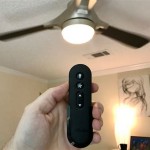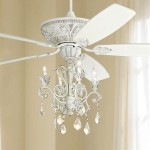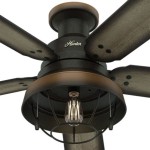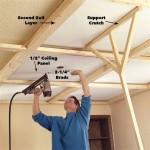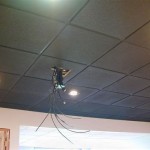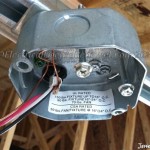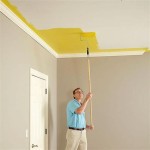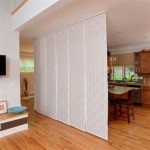Everything You Need to Know About Lights on Ceilings
Ceiling lights serve as a primary source of illumination in most homes and commercial spaces. Understanding the various types, installation processes, and design considerations is crucial for creating a well-lit and aesthetically pleasing environment.
Types of Ceiling Lights
The market offers a wide array of ceiling light fixtures to suit diverse needs and preferences. These can be broadly categorized based on their mounting style and functionality.
Flush Mount Lights: These fixtures sit flush against the ceiling, making them ideal for rooms with low ceilings. They offer a clean, unobtrusive look and provide general ambient lighting.
Semi-Flush Mount Lights: These fixtures extend slightly from the ceiling, offering a balance between the close-to-ceiling profile of flush mounts and the decorative appeal of chandeliers. They are suitable for rooms with standard ceiling heights.
Chandeliers: These elaborate fixtures hang from the ceiling, often featuring multiple light sources and decorative elements. They are typically used in dining rooms, entryways, and other spaces where a statement piece is desired.
Pendant Lights: These fixtures hang from the ceiling by a cord, chain, or rod. They are available in various styles and can be used singly or in groups to create a focal point or provide task lighting.
Recessed Lights: Also known as can lights, these fixtures are installed directly into the ceiling, creating a sleek and minimalist look. They are often used for general lighting or to highlight specific areas.
Track Lighting: These systems consist of multiple light heads mounted on a track, allowing for adjustable and directional lighting. They are commonly used in kitchens, galleries, and retail spaces.
Choosing the Right Ceiling Light
Selecting the appropriate ceiling light involves considering several factors, including the room's size and function, ceiling height, and desired aesthetic.
Room Size and Function: Larger rooms require more powerful lighting solutions. Consider the purpose of the room – a kitchen needs bright task lighting, while a bedroom may benefit from softer, ambient lighting.
Ceiling Height: Low ceilings benefit from flush or semi-flush mounts, while higher ceilings can accommodate chandeliers or pendant lights.
Aesthetic: Choose a fixture that complements the overall style of the room. Consider the existing decor, color palette, and architectural features.
Installation Considerations
Proper installation is crucial for safety and functionality. While some fixtures can be installed by homeowners with basic electrical knowledge, complex installations often require the expertise of a qualified electrician.
Safety Precautions: Always turn off the power at the breaker box before working with electrical fixtures. Follow all manufacturer instructions carefully.
Wiring: Ensure the wiring is compatible with the fixture and the electrical system. Improper wiring can lead to malfunctions or safety hazards.
Mounting: Securely mount the fixture to the ceiling joists or electrical box, following the manufacturer's instructions.
Lighting Design Principles
Effective lighting design enhances the functionality and ambiance of a space. Consider incorporating different layers of lighting to achieve optimal results.
Ambient Lighting: This provides general illumination for the room, often achieved through ceiling fixtures.
Task Lighting: This provides focused light for specific activities, such as reading, cooking, or working at a desk.
Accent Lighting: This highlights architectural features, artwork, or other decorative elements.
Energy Efficiency
Energy-efficient lighting options can help reduce electricity consumption and lower utility bills.
LED Lights: Light-emitting diodes (LEDs) are highly energy-efficient and have a long lifespan.
Energy Star Certified Fixtures: Look for fixtures that have earned the Energy Star label, indicating they meet specific energy efficiency criteria.
Maintenance and Cleaning
Regular maintenance and cleaning can extend the lifespan of ceiling lights and ensure optimal performance.
Cleaning: Dust fixtures regularly and clean them with a soft cloth and appropriate cleaning solution.
Bulb Replacement: Replace burnt-out bulbs promptly. Consider using long-lasting LED bulbs to reduce maintenance frequency.
Cost Considerations
Ceiling lights are available at a wide range of price points. Factor in the cost of the fixture, installation, and ongoing maintenance when making a selection.
Budget: Establish a budget before shopping for fixtures to narrow down the options.
Long-Term Costs: Consider the long-term cost of ownership, including energy consumption and bulb replacement costs.

Ceiling Lights How To Use Chandelier Spotlight Recesses

Everything You Must Know About Integrated Led Lighting Delmarfans Com

6 Steps How To Install Led Strip Lights On Ceiling

A Comprehensive Guide To The Best Ceiling Lights Designs For Your Home

The Truth About Flush Mount Ceiling Lights 24 Under 200 Laurel Home

7 Types Of Ceiling Lights Making Maanita

Wafer Lights Vs Can Everything You Should Know

Beautiful And Easy To Install Profile Light Ceiling Designs

Garage Lighting 101 Everything You Need To Know Designs Of St Louis

Everything You Need To Know About Track Lighting The Lightbulb Co
Related Posts

